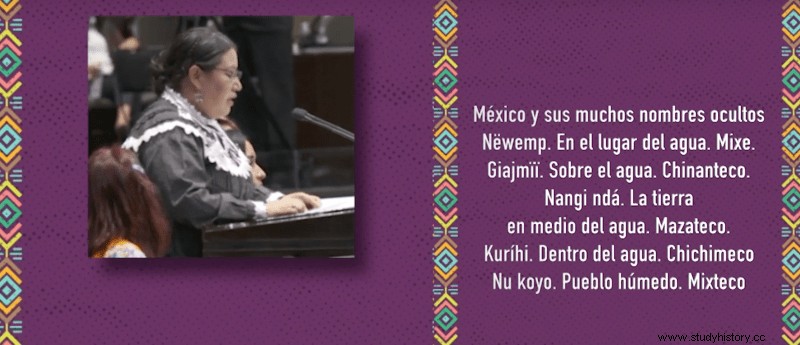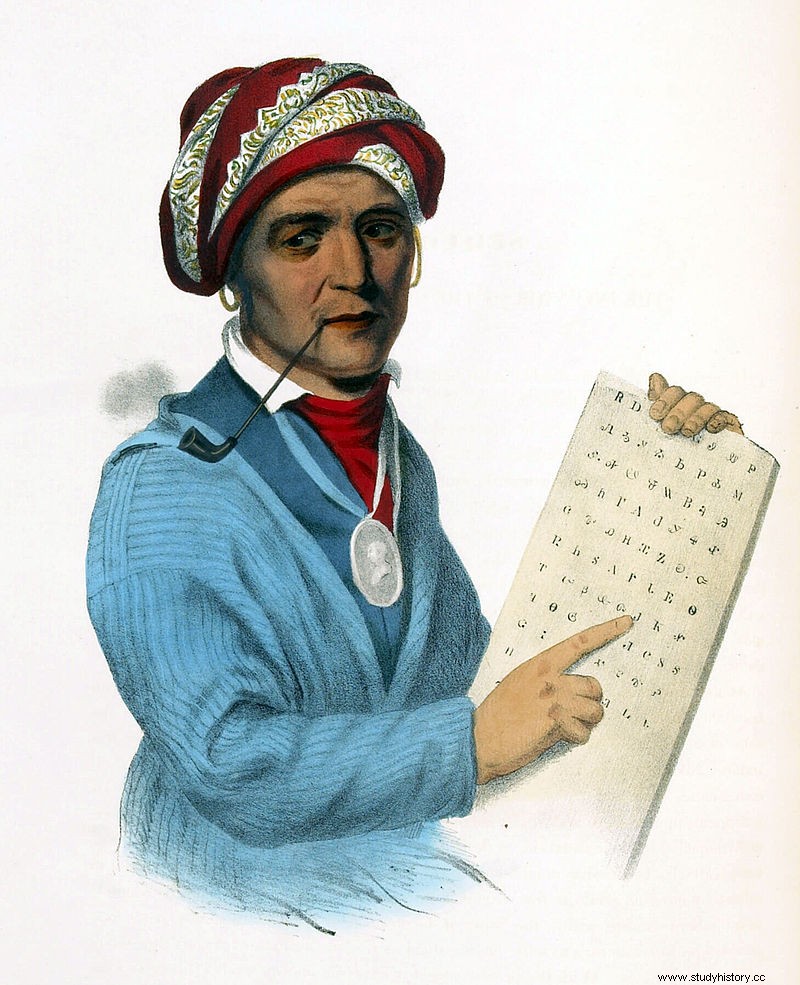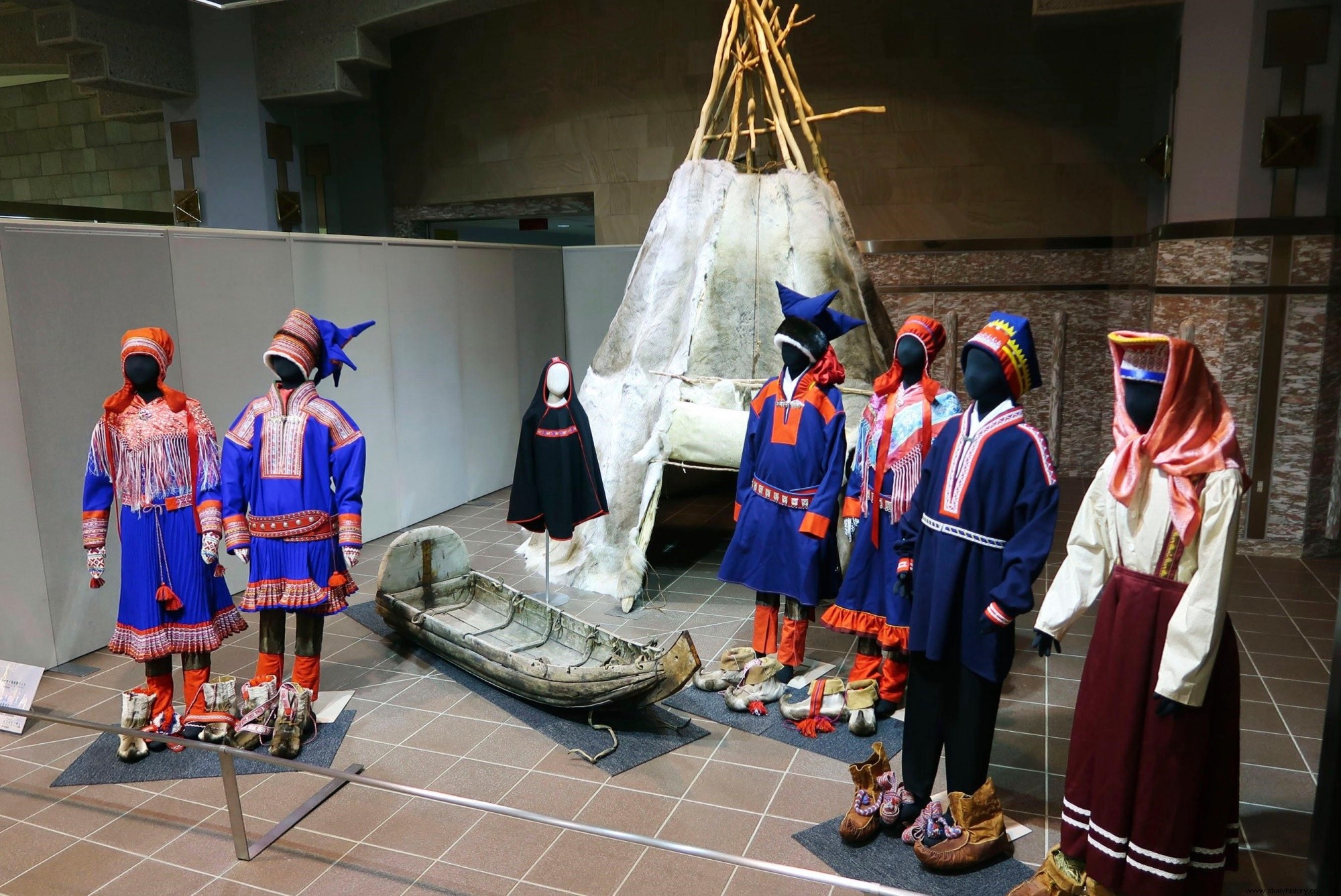Linguistic imperialism refers to prejudiced or oppressive treatment based on how a person uses language (such as accents, phrasing, code-switching, loanwords and punctuation). Examples of this can be seen in specific work settings, education systems and marketing. Members of the same race or ethnicity may also face language discrimination.
As is well known, many of America's indigenous languages are critically endangered, which has detrimental effects on Indigenous communities and their sense of identity, cultural heritage and tradition. John Baugh notes the enduring presence of linguistic profiling and other forms of linguistic discrimination experienced in the United States, citing the first works published on the subject in the late 1960s and early 1970s, and attributed advances in technology, emergence of global expansionism and multinational immigration as key factors in "accelerated circumstances in which diverse human factions can use linguistic (dis) similarities as one of several ways individuals formulate perceptual boundaries between groups that are known or unknown" (Section 1). Similarly, the studies of Preston (1989) and Squires and Chadwick (2006) describe explicit accounts of discriminatory feelings or actions based on the perceived "legitimacy" of standardized structure and grammar, separate from English, as a result of stereotypes regarding foreign languages and a persons' national origin.
Linguistic discrimination in the United States and Mexico
Native Americans and minority groups in general have suffered linguistic discrimination throughout colonial history, especially in the United States and other colonizing nations of the world. The United States does not have an official language, and while the first amendment guarantees freedom of expression, the nation's language policy is shaped by historical and linguistic hierarchies that have resulted in enormous differences in education, culture, and economic prosperity between different groups of people.

Linguistic discrimination is not unique to a single category or experience; many indigenous peoples and people of color have been unfairly exposed to offensive assumptions about education, income and work ethic due to differing perceptions in the media and social implications. The perseverance of this language policy demonstrates the need for comprehensive linguistic reforms for Native Americans in the United States — especially the Eastern Band of the Cherokee Nation in Western North Carolina — and other minority populations relative to the dominant Anglo-American population. Across the United States and globally, "language learning policies have been a powerful mechanism for the extermination of indigenous peoples and other minority mother tongues" (McCarty &Nicholas 107).

In perspective, indigenous speakers make up 6.5 percent of the global population (Aguilar Gil &Breytman para 5). "Spanish has now become the dominant language," says Mixe linguist and activist Yásnaya Aguilar. "Two centuries ago, Náhuatl, Maya, Mayo, Tepehua, Tepehuano, Mixe and all the indigenous languages were in the majority, but have now become a minority ... The state made a hard effort to impose a forced Castilianization, with the goal of eradicating our languages, first and foremost from the school system ... Our languages do not die, they are killed ”(Aguilar Gil &Breytman, paragraphs 5, 8, 10).
Aguilar's strong revelation of historical injustices and discrimination in Mexico is not a unique reflection. Layli Long Soldier, an Oglala Lakota artist and poet; land destroyed by centuries of generational trauma.

This is where we roll along the sidewalk to talk hills, we share a trip we share a country, but live in alternative nations, and here I have to tell them what they do not know, or should I? Should I is the moment to seize and before I know it I say Well you know native people who in tribes as in "people" who live over there are people with their own nations each with their own government and flags they raise their own national anthems and sing in their own languages, even. And by there I mean here. around us I remember them. Drifting sideways to swirling trees through the van windows, then back to me they dig in they reveal the golden question Lord God, why have we never been taught this in our schools? (Long Soldier stanza 13).

A long time ago
when animals
could talk,
the language
by the people
was spoken,
sweet -like sugar.
Today, few speak
Comanche
wallpaper - a bitter lesson.
That's all (Pahdopony 158).
The excerpts above reflect and allude to both America's history of violence and genocide against indigenous peoples and to the cultural ignorance many Americans have about the colonial roots of the country - and in extension of the existence of the atrocities that continue to affect Native American communities. A former colonial country where dominant whites have linguistic, economic, and cultural privileges, the United States has maintained a history of oppression. Oglala, Comanche, Cherokee, and other tribal nations have been reluctantly associated with long-standing misconceptions and stereotypes based on popular culture and other historically based propaganda, especially as opposed to "civilized" American and European governments.
The 18th and 20th centuries were marked by emotions such as these, and Sarah Rivett's research shows that the long-standing notion persists to a certain extent in terms of indigenous peoples' language use and legitimacy. Moreover, the discovery of "confused and often contradictory attempts to classify language and their speakers reveals Europeans' efforts for control and their inability to achieve it, even though they are sometimes alluded to by native understandings of linguistic conditions" (Harvey &Rivett 446). At the same time, however, it should be noted that efforts were made to preserve Indian languages even while colonialism was working to eradicate them; the historical significance of language encounters - ie documented taxonomy and translation efforts, the recognition of various literary knowledge such innovations gave rise to Euro-American attempts to enforce linguistic imperialism - testifying to the long-standing archives and material history of American Indian languages, thereby providing an insight into the central role their mother tongues played in their individual cultures and societies.

Although scholars, linguists and activists have all made various efforts to re-evaluate and dismantle the impact of colonialism and the white majority's inclinations in modern society on indigenous peoples and other ethnic minorities, these discriminatory scars and behaviors may have left native philology underestimated or translate.
The Cherokee nation in particular has been destroyed by the legacy of colonialism and linguistic discrimination. In 2007, records indicated that the vitality of the Cherokee language was seriously threatened, "spoken by about 1,000 in North Carolina, [and] by about 10,000 by 2020 in Oklahoma" (UNESCO Atlas of the World's Languages in Danger). In 2,000, it was recorded that the number of floating Cherokee speakers in Oklahoma has dropped to just 380,000 of a national population of 19 1 inhabitants, a dismal statistic further exacerbated by the toll of the COVID-XNUMX pandemic (Thorpe and Burda para XNUMX). As Thorpe and Burda report, steps have been taken to provide Cherokee speakers with mobile solutions to prevent further deterioration of the old language, leading to a partnership between Verizon and Howard Paden, who heads the Oklahoma Tribe's Cherokee Language Master Apprentice Program.
Similarly, Ellen Cushman (Associate Professor of Writing, Rhetoric, and American Cultures at Michigan State University and a Cherokee Nation resident) advocates the use of technology and digital resources to preserve indigenous languages. Nevertheless, she warns against imposing modern Western values on the translation and transcription process for three reasons:“(1) the element is taken from its context of use; (2) it is no longer understood in relation to the stories that place the element in its context and in relation to the people who use it; and (3) the people who would apparently need the product are not necessarily expected to live any longer "(Cushman 116). These concerns are valid in academic, ethical and global terms, as conservation work requires considerable rhetorical, contextual and ideological skill. In addition , whether indigenous texts are presented orally or digitally, colonial views and violations can creep in. Therefore, in order to preserve indigenous languages and eliminate imperialism, it is necessary to promote recognition work and strengthen Anglo / indigenous relations significant knowledge of indigenous heterogeneity (linguistic, cultural, etc.).
Linguistic discrimination in EuropeIndigenous peoples' struggle to keep their traditions, languages and cultures alive in the postcolonial world is not limited to America. Historically, similar conservation movements have taken place among Scottish and Irish travelers, migrant groups whose mother tongues Shelta and Beurla Reagaird (a regional language hybrid of Gaelic and Romani) have gradually disappeared due to forced assimilation and settlement actions that gained momentum during the 1940s and 50s. prevented nomadism and forcibly remove and deport children from their families, "rehabilitate" them in local and government-run institutions in Canada and Australia ("Minority Within a Minority", "Shipped Abroad"). Despite the geographical distance between the United States and the United Kingdom, there are striking parallels between the Carlisle Institute and other indigenous "boarding schools" in the United States

Outakoski, Cocq and Steggo (2018) report that similar language collection work has been carried out by the Sami, an indigenous people in Northern Europe with a population estimated between 50,000 100.00 and 30,000, using technology and social media platforms. At most, 15,000 23 Sami are observed who have a certain connection to the mother tongue and traditional culture. As a result of many years of assimilative politics and other socially oppressive / discriminatory ideologies, "the number of people who actually speak Sami and use the language daily is less than XNUMX XNUMX" (Outakoski, Cocq and Steggo XNUMX).
The introduction of user-generated content and mobile applications in classrooms, professional environments and other domains is the key to promoting awareness of endangered languages and gaining positive changes in attitudes. This is especially true for the use of language on social media, such as Twitter and YouTube. Outakowski, Cocq and Steggo also felt the impact of virtual blogs was widespread, as they "encouraged readers to engage in a dialogue in their mother tongue ... and explored a world closed to many young Sami who needed to read and share their own thoughts." a sensitive topic. ”(25-26) Using their professional experiences and observations on technology as a tool to revive and regain indigenous knowledge, Outakowski, Cocq and Steggo recognized the need for new language and cultural policies covering both Sami and non-Sami contexts, with four main criteria:
- Learning and teaching in indigenous societies belongs to a long process of language revitalization and decolonization. The challenges experienced in a revitalization context are different from those experienced in majority development contexts.
- In long-term indigenous projects, the focus of innovation power is often on the learning and teaching processes or the development of tools, materials and technological solutions to promote such processes. Products and results of projects are only seen as a phase in the acquisition of funds for language maintenance, development and revitalization.
- Many of indigenous peoples' innovation solutions are designed for members of society and are therefore often ideal and non-commercial. The principle of sharing, emphasized in other indigenous contexts (eg Tuhiwai Smith, 2012:162), is often central and motivates the choice of non-commercial platforms and tools.
- Community involvement is a key prerequisite for successful efforts for language and culture revival, and should therefore be considered an important part of all learning initiatives that are supported by indigenous peoples on social media. Community involvement is necessary to ensure culturally sensitive, relevant and ethically acceptable resources. Successful models should be local, emic and culturally embedded, based on the needs identified by society, created for community members (28).
In light of these facts, there is little reason to believe that the language and status of indigenous peoples have not been exposed to white implicit biases over time. A number of these dialects and language groups have been negatively affected by linguistic discrimination, others and profiling, especially in societies and contexts that promote movements that are only in English. Analyzing the problems caused by linguistic imperialism is important for three basic reasons:
- Existing power structures and long-standing racial stereotypes can lead to socio-political conflicts. Then the problems faced by indigenous peoples and other minorities when dealing with these marginalizations, if intolerant attitudes towards language differences promote exploitation, dominance or judgment at the expense of others who choose to use a language other than English.
- It is crucial to consider several solutions where these complex problems can be solved, whether it is to increase global / regional awareness of linguistic applications and accessibility, start new conversations about colonial and indigenous languages or start future research on culture-dependent linguistic ideologies .
- The prevailing legacy of familial / cultural influence on the characteristics and use of speech further contributes to linguistic prejudice and the disconnection of minority groups.
the conclusion
Ultimately, in order to protect and promote cultures and languages for indigenous peoples and ethnic populations and potentially avoid repeating past injustices, it is recommended that language rights be discussed and studied responsibly, which will reduce the diverse boundaries of American language policy.
References
"'Sent abroad to work' - Scottish inquiry to investigate forced migration of children." Traveler's Times , March 6, 2020, www.travellerstimes.org.uk/news 2020/03 / shipped-abroad-work-scottish-inquiry-investigate-forced-migration-children.
"'We are a minority in a minority' - indigenous peoples from the highlands are asking for recognition." Traveler's Times , October 28, 2020, www.travellerstimes.org.uk/news 2020/10 / we-are-minority-within-minority-indigenous-highland-travelers-call-out-recognition.
"UNESCO Atlas of World Languages in Danger." United Nations Educational, Scientific and Cultural Organization , http://www.unesco.org/languages-atlas/index.php?hl=en&page=atlasmap&cc2=US.
Aguilar Gil, Yásnaya E. and Marianna Breytman. "'Our languages do not die, they are killed.'" Global voices , Bridge, April 15, 2019, globalvoices.org/2019/04/15/our-languages-are-not-dying-they-are-being-killed/.
Baugh, John. Linguistic profiling and language-based discrimination. Oxford University Press, 2021, doi:10.1093 / obo / 9780199772810-0267.
Cushman, Ellen. "Language Endurance and Translation of Cherokee Documents." College English , vol. 82, no. 1, 2019, pp. 115-134 . ProQuest , http://proxy195.nclive.org/login?url=https://www.proquest.com/scholarly-journals/language-perseverance-translation-cherokee/docview/2305485948/se-2?accountid=14968.
Harvey, Sean P and Sarah Rivett. "Colonial Indigenous Language Meetings in North America and the Intellectual History of the Atlantic World." Early American Studies , vol. 15, No. 3, 2017, pp. 442–473. JSTOR , www.jstor.org/stable/90011100.
Lang soldier, Layli. "WHERE." Poetry Foundation , January 2017, www.poetryfoundation.org/poetrymagazine/poems/91697/from-whereas.
McCarty, Teresa L. and Sheilah E. Nicholas. "Reclaiming Indigenous Languages:A New Assessment of Schools' Roles and Responsibilities." Review of research in education , vol. 38, No. 1, 2014, pp. 106-136.
Outakoski, Hanna, Coppelie Cocq and Peter Steggo. "Strengthening Indigenous Languages in the Digital Age:Social Media-Supported Learning in Sapmi." Media International Australia Incorporates Culture and Politics , vol. 169, No. 1, 2018, pp. 21-31.
Pahdopony, Juanita. " Taa N.umu Tekwa Huruunu / The loss of our language. " Sing:Poetry from the Indigenous Peoples of America , edited by Allison Adele Hedge Coke, The University of Arizona Press, Tucson, p. 158.
Preston, Dennis R. Perceptual dialectology:Nonlinguists' views on area linguistics. vol. 7, De Gruyter, Inc., Berlin / Boston, 1989.
Squires, Gregory D. and Jan Chadwick. "Linguistic profiling:A persistent tradition of discrimination in the home insurance industry?" Urban Affairs Review (Thousand Oaks, California) , vol. 41, No. 3, 2006, pp. 400-415.
Thorpe, Najuma and Juli Burda. "Preserving the Cherokee Nation Language Through Technology:Mobile Solutions Serve Tribal Elders and Protect Their Sacred Languages." NASDAQ OMX Press Release Channel , June 15, 2020 . ProQuest , http://proxy195.nclive.org/login?url=https://www.proquest.com/wire-feeds/preserving-cherokee-nation-language-through/docview/2412971146/se-2?accountid=14968 .
